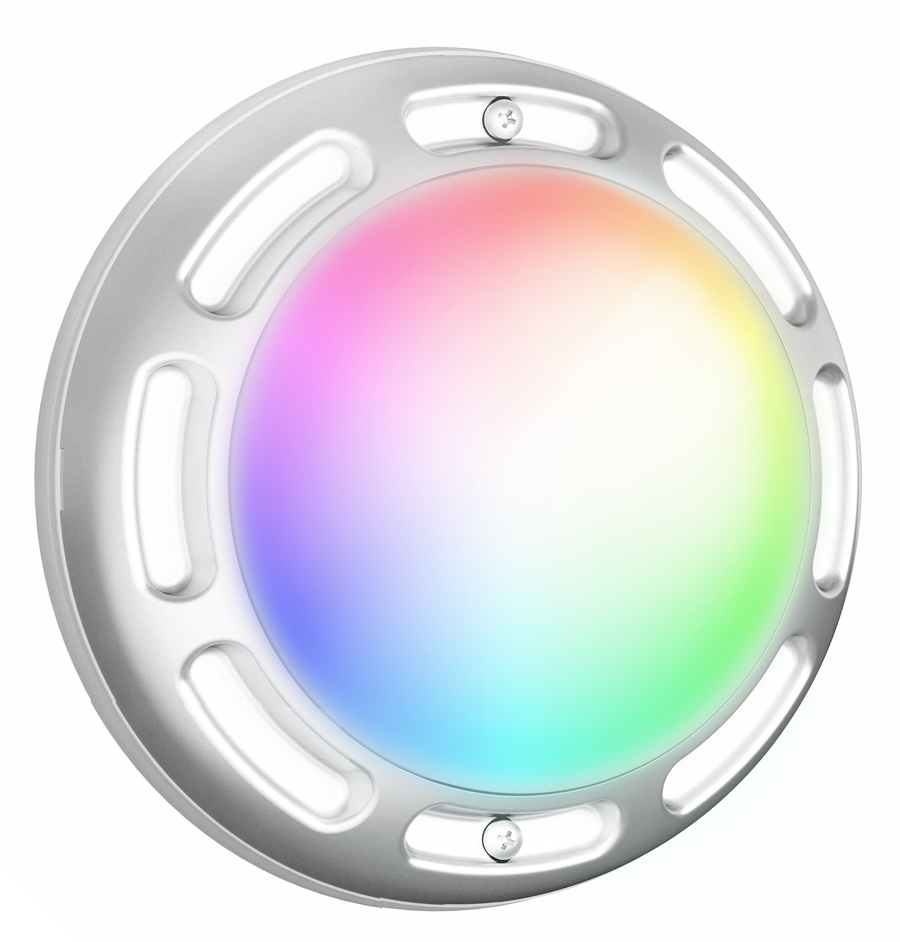Moved from HERE
I just came across this very interesting thread and want to share my experience. I purchased 8 of the Jandy Pro lights for my pool as owner builder approximately 2 1/2 years ago (3 x 30W, 1 x 20W, and 4 x 9W). The cost was over $2600. Within one year 5 had failed, that number is now 7. Before the first year was up I contacted Jandy and they refused to cover under the warranty since, as owner builder, I did not use a pool company to install them. I am finally tired of only having white and green as the two colors that I can choose for a consistent color in the pool. I lowered the pool water level and removed the cartridge from the 20W light and set about to analyze on the bench. I am a retired electronics engineer by profession so this is not rocket science for me. There was no water intrusion so the assembly was in good condition. The LED PCB board contains two white, one red, one green and one blue LED. The PCB board has space for additional white, red, green and blue LEDs which I assume are used for the 30W units. Indeed on the bench the blue LED was not working. Swapping the blue and red LED wires confirmed the blue driver IC on the circuit board was OK and indeed the blue LED had failed. With a microscope I was able to read the LED driver IC part number (AL8806) and a current setting resistor value of 0.18 ohms. From the AL8806 spec sheet it is then easy to calculate the actual LED current setting and hence wattage of the assembly since white, red, green, and blue LEDS have specific turn on voltages at a given current. Power is then calculated as the product of Voltage x Current. Low and behold, the actual maximum wattage by design (if all LEDS are turned on) of the Jandy PRO 20W is 8.5W. I doubt it is even that since I don’t believe there is a color choice that turns all LEDs on at the same time. I am not aware of any RMS versus music power that applies to a DC device that warrants the claim of a 20W device that is actually designed as 8.5W. If anyone out there can enlighten me that would be great? Since this is already long, I will post what I am doing to fix and improve my lights in another post so stay tuned.
I just came across this very interesting thread and want to share my experience. I purchased 8 of the Jandy Pro lights for my pool as owner builder approximately 2 1/2 years ago (3 x 30W, 1 x 20W, and 4 x 9W). The cost was over $2600. Within one year 5 had failed, that number is now 7. Before the first year was up I contacted Jandy and they refused to cover under the warranty since, as owner builder, I did not use a pool company to install them. I am finally tired of only having white and green as the two colors that I can choose for a consistent color in the pool. I lowered the pool water level and removed the cartridge from the 20W light and set about to analyze on the bench. I am a retired electronics engineer by profession so this is not rocket science for me. There was no water intrusion so the assembly was in good condition. The LED PCB board contains two white, one red, one green and one blue LED. The PCB board has space for additional white, red, green and blue LEDs which I assume are used for the 30W units. Indeed on the bench the blue LED was not working. Swapping the blue and red LED wires confirmed the blue driver IC on the circuit board was OK and indeed the blue LED had failed. With a microscope I was able to read the LED driver IC part number (AL8806) and a current setting resistor value of 0.18 ohms. From the AL8806 spec sheet it is then easy to calculate the actual LED current setting and hence wattage of the assembly since white, red, green, and blue LEDS have specific turn on voltages at a given current. Power is then calculated as the product of Voltage x Current. Low and behold, the actual maximum wattage by design (if all LEDS are turned on) of the Jandy PRO 20W is 8.5W. I doubt it is even that since I don’t believe there is a color choice that turns all LEDs on at the same time. I am not aware of any RMS versus music power that applies to a DC device that warrants the claim of a 20W device that is actually designed as 8.5W. If anyone out there can enlighten me that would be great? Since this is already long, I will post what I am doing to fix and improve my lights in another post so stay tuned.
Last edited by a moderator:




